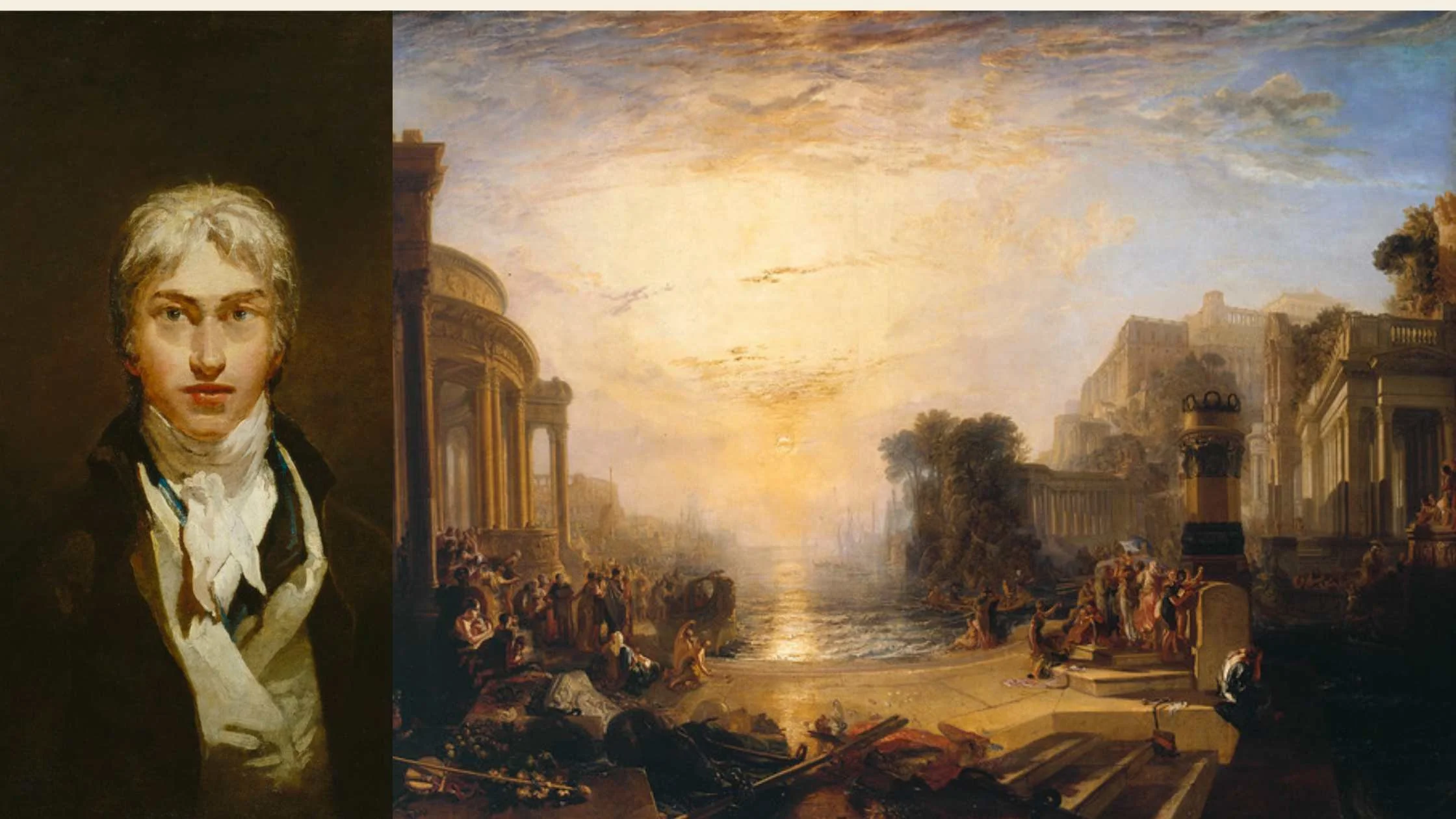The Life and Legacy of J.M.W. Turner: A Brief Biography
Joseph Mallord William Turner, often referred to as J.M.W. Turner, stands as one of the most influential and celebrated artists in British history. Born on April 23, 1775, in Covent Garden, London, Turner's artistic journey spanned the late 18th and early 19th centuries, leaving an indelible mark on the art world that continues to be felt today.
Early Life and Education: Turner's artistic talent became evident at a young age. His father, William Turner, was a barber and wig maker, while his mother, Mary Marshall, hailed from a family of butchers. Despite their modest means, Turner's parents recognized his artistic abilities and supported his early interest in drawing and painting. Turner attended the Royal Academy of Arts, where he began formal art training at the age of 14. Under the tutelage of renowned artists such as Thomas Gainsborough and Sir Joshua Reynolds, Turner honed his skills and developed a deep appreciation for the landscapes and seascapes that would later become his trademark subjects.
Artistic Development: Turner's early works primarily focused on architectural and topographical subjects, reflecting the influence of his mentor, architect and watercolourist Thomas Malton. However, as Turner matured as an artist, his style underwent a dramatic transformation. Inspired by the Romantic movement and the natural beauty of the British countryside, Turner began to experiment with light, colour, and atmosphere, infusing his landscapes with a sense of drama and emotion. His innovative use of watercolour techniques, including washes, glazes, and wet-on-wet application, set him apart as a visionary artist ahead of his time.
Career Highlights: Turner's illustrious career spanned over six decades, during which he produced an extensive body of work encompassing paintings, watercolours, and drawings. His mastery of light and atmosphere, coupled with his keen observation of nature, earned him widespread acclaim and recognition as one of the greatest landscape painters in history. Some of Turner's most renowned works include "The Fighting Temeraire," "Rain, Steam, and Speed – The Great Western Railway," and "The Slave Ship (Slavers Throwing Overboard the Dead and Dying, Typhoon Coming On)."
Legacy and Influence: Turner's legacy extends far beyond his artistic achievements. His groundbreaking approach to landscape painting paved the way for future generations of artists, inspiring movements such as Impressionism and modern abstraction. Turner's ability to capture the sublime beauty and power of nature continues to resonate with audiences worldwide, serving as a timeless source of inspiration for artists, scholars, and admirers of art.
Conclusion: In conclusion, the life and legacy of J.M.W. Turner represent a remarkable chapter in the history of art. From humble beginnings to international acclaim, Turner's journey is a testament to the power of creativity, perseverance, and vision. His innovative techniques, evocative compositions, and profound connection to the natural world continue to captivate audiences and leave an enduring imprint on the art world.
References:
Tate Britain - J.M.W. Turner Collection: https://www.tate.org.uk/visit/tate-britain/display/bp-spotlight-jmw-turner
Images taken from https://www.tate.org.uk/art/research-publications/jmw-turner/joseph-mallord-william-turner-1775-1851-r1141041
National Gallery - J.M.W. Turner Biography: https://www.nationalgallery.org.uk/artists/joseph-mallord-william-turner
The Metropolitan Museum of Art - J.M.W. Turner Overview: https://www.metmuseum.org/toah/hd/trnr/hd_trnr.htm
The J.M.W. Turner Society: https://www.turnersociety.org.uk/
J.M.W. Turner on Wikipedia: https://en.wikipedia.org/wiki/J._M._W._Turner
This brief biography provides an overview of J.M.W. Turner's life, career highlights, and lasting impact on the art world. For further exploration, the provided links offer access to additional resources and information about Turner's life and legacy.

